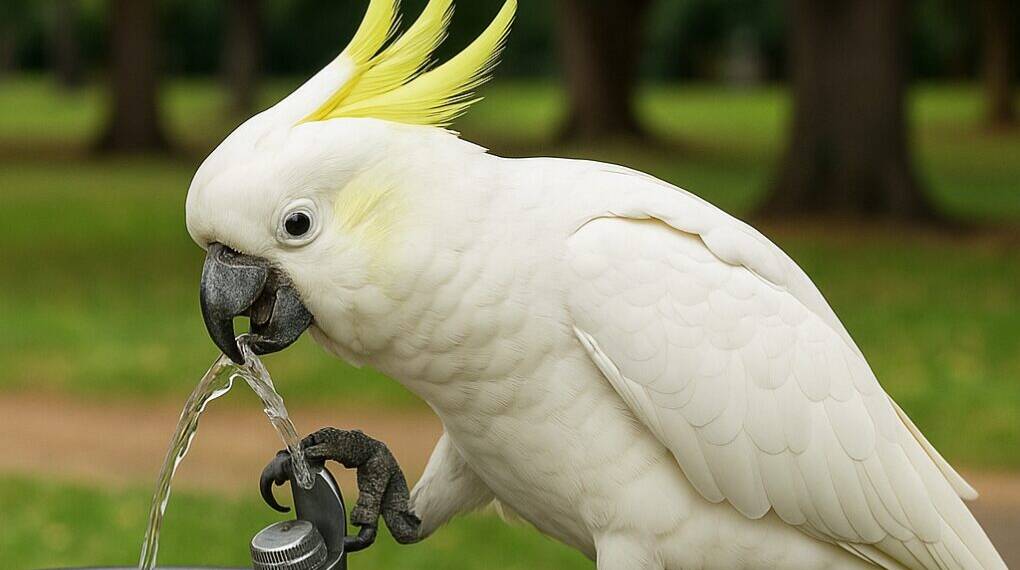On a sweltering day in Sydney, parkgoers aren’t the only ones seeking a cool drink from the nearest fountain. Sulfur-crested cockatoos, known for their intelligence and bold personalities, have figured out how to operate public water fountains — a behavior that scientists say reflects remarkable dexterity, problem-solving, and even hints of a unique bird “drinking culture.”
In a study published June 4 in Biology Letters, researchers led by cognitive ecologist Lucy Aplin of the Australian National University detail how these urban-adapted parrots grip, twist, and lean their bodies with surprising coordination to access water from human-designed infrastructure.
Clever Cockatoos at Work
The discovery was first made in 2018 when behavioral ecologist Barbara Klump, then observing cockatoos’ foraging behaviors at a park in western Sydney, noticed the birds manipulating a drinking fountain. Curious whether this was a one-off event, the research team surveyed other parks and spoke with rangers — learning the behavior was not only common but also widespread across the local population.
To capture the full picture, researchers installed motion-triggered cameras at Charlie Bali Reserve, a popular mixed-use park, and closely monitored how the cockatoos interacted with the fountain.
What they saw was extraordinary. The parrots use one foot to grip the base, and the other to twist the fountain handle — compressing the internal spring just enough to release a spout of water. To manage the needed force, they lean their bodies sideways, then quickly tilt back to take a drink.
“It requires a high level of motor coordination,” said Aplin, “and it’s not something you’d expect to see from a wild animal adapting to urban hardware.”
Culture in the Bird World?
The team tracked individual birds and their repeated fountain use over time. Their analysis revealed that about 70% of the local cockatoo population attempted to use the fountains, with roughly half managing to succeed.
The behavior, according to Aplin, appears to have cultural elements. “This seems to be a locally-learned tradition, passed between birds — a form of animal culture,” she said. That’s not the only example in Sydney: elsewhere in the city, cockatoos have famously learned to open household trash bins in search of snacks.
While animal cultures have been well documented in species like chimpanzees and dolphins, drinking-specific behaviors like this are rare. One known comparison is chimpanzees using moss sponges to soak up and sip water.
More Than Just a Drink?
But why go to the trouble of operating a fountain when streams and puddles are readily available nearby?
That’s the mystery Aplin hopes to solve next. She speculates that fountains may offer a safer, predator-free location to rehydrate. Or perhaps there’s a social component — the birds often queue patiently, sometimes waiting up to 10 minutes for their turn.
“They appear quite willing to wait, almost as if it’s a communal event,” Aplin noted.
There’s also a chance that the fountain water is simply cleaner or better tasting than murky creek water. “It could be one, or all three reasons,” she said.
Avian Innovation in Urban Environments
The findings are part of a growing body of research showing how wildlife adapts to city life in unexpected ways. From raccoons navigating garbage bins to foxes using crosswalks, urban ecosystems are becoming arenas of rapid behavioral evolution.
In Sydney, the cockatoos’ latest trick is more than a novelty — it’s a testament to animal intelligence and resilience.
“These birds are showing us how adaptable and innovative wildlife can be,” Aplin said. “And in doing so, they’re reshaping our understanding of what it means to be smart in the animal kingdom.”








